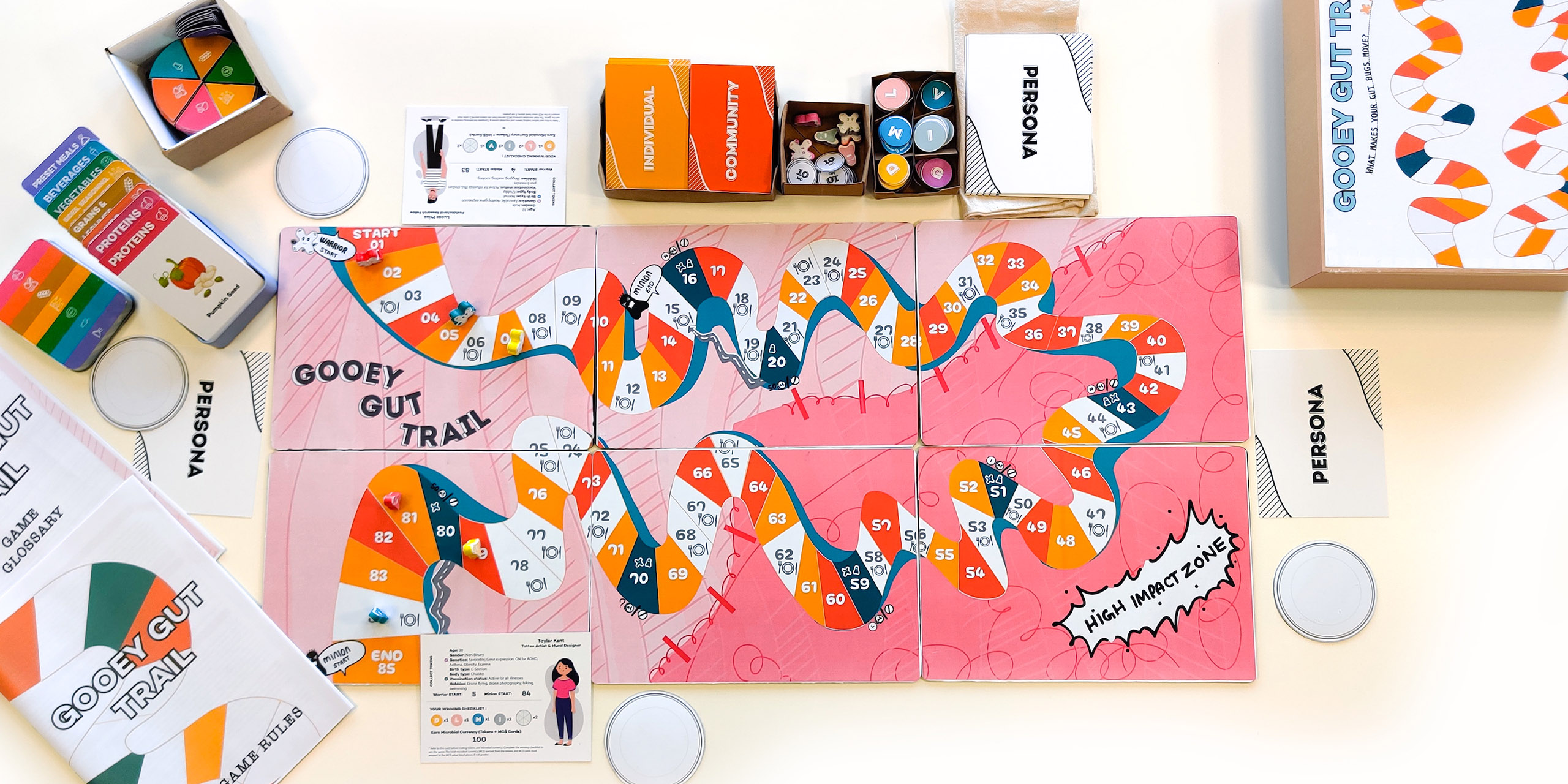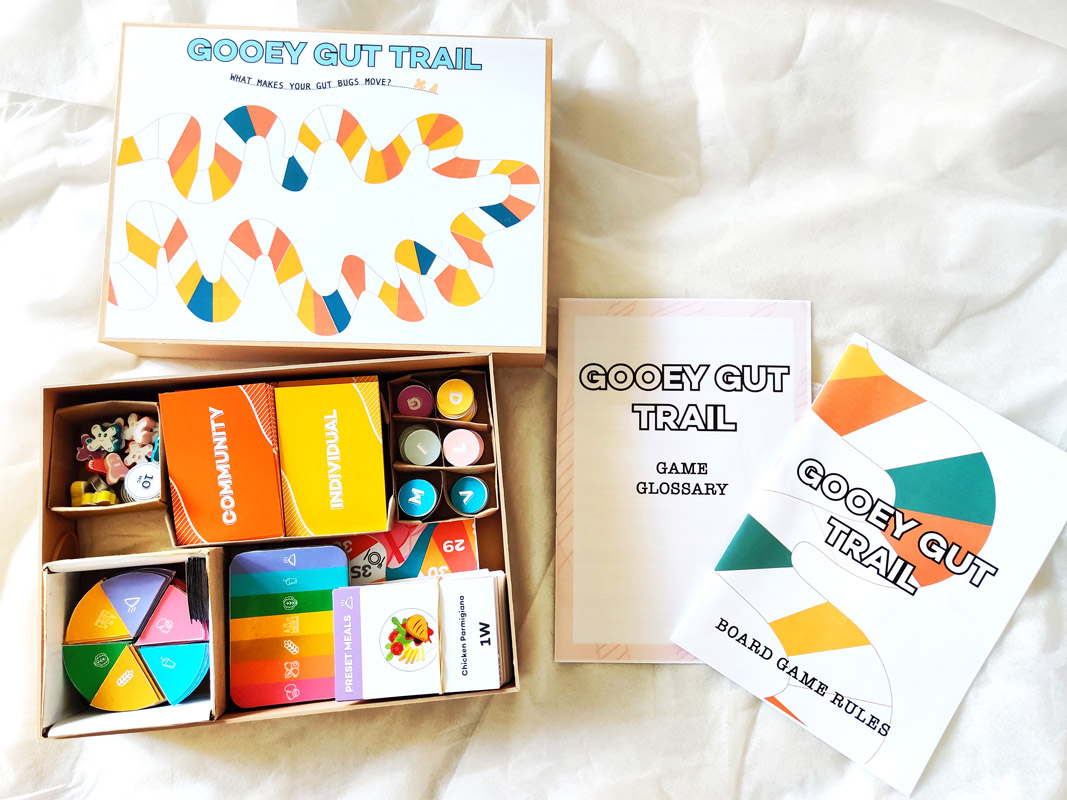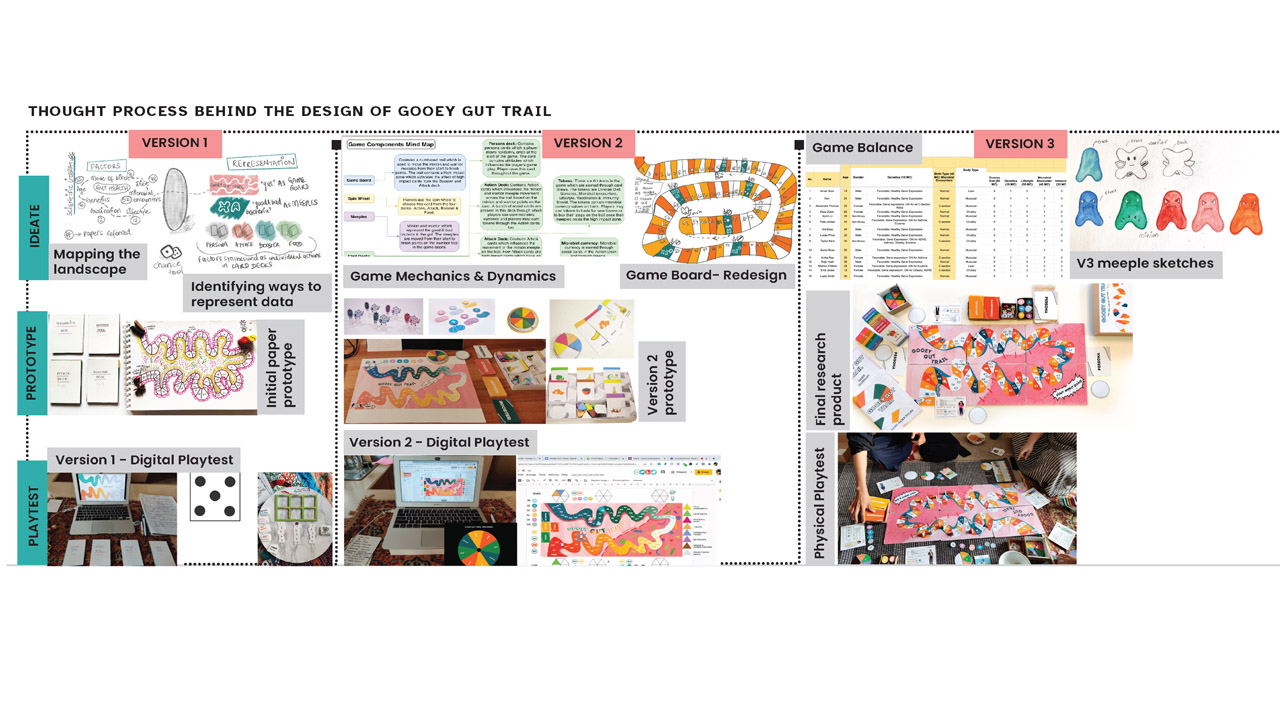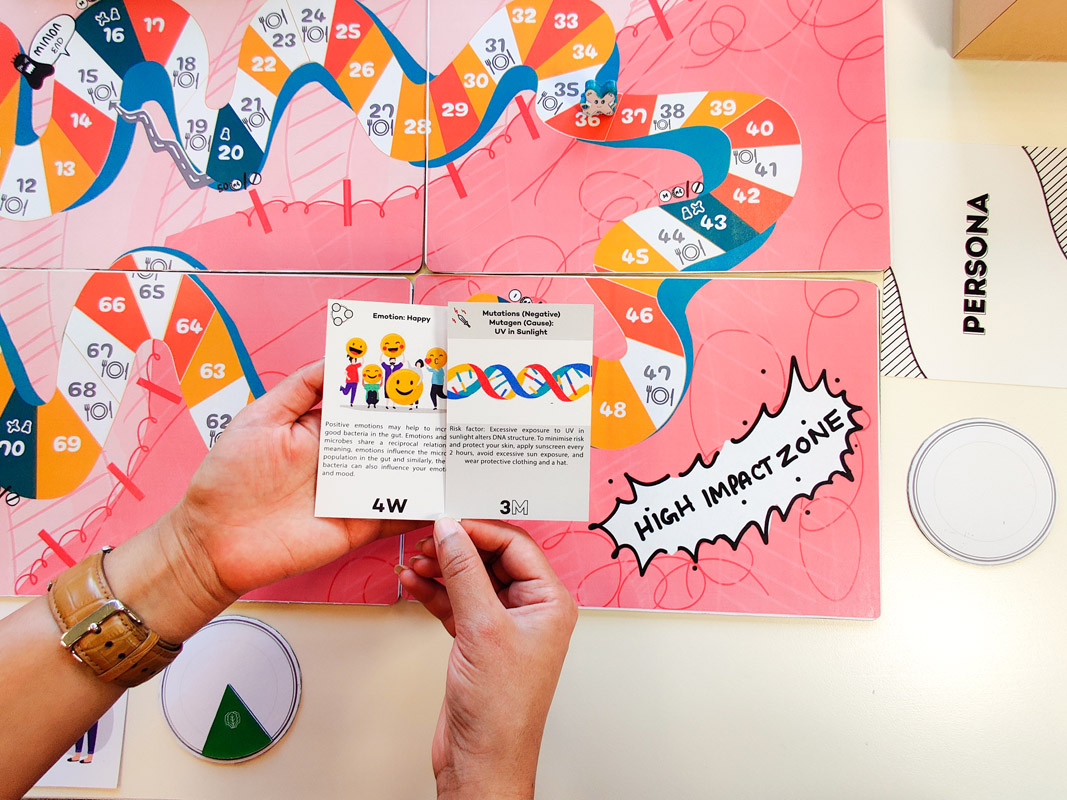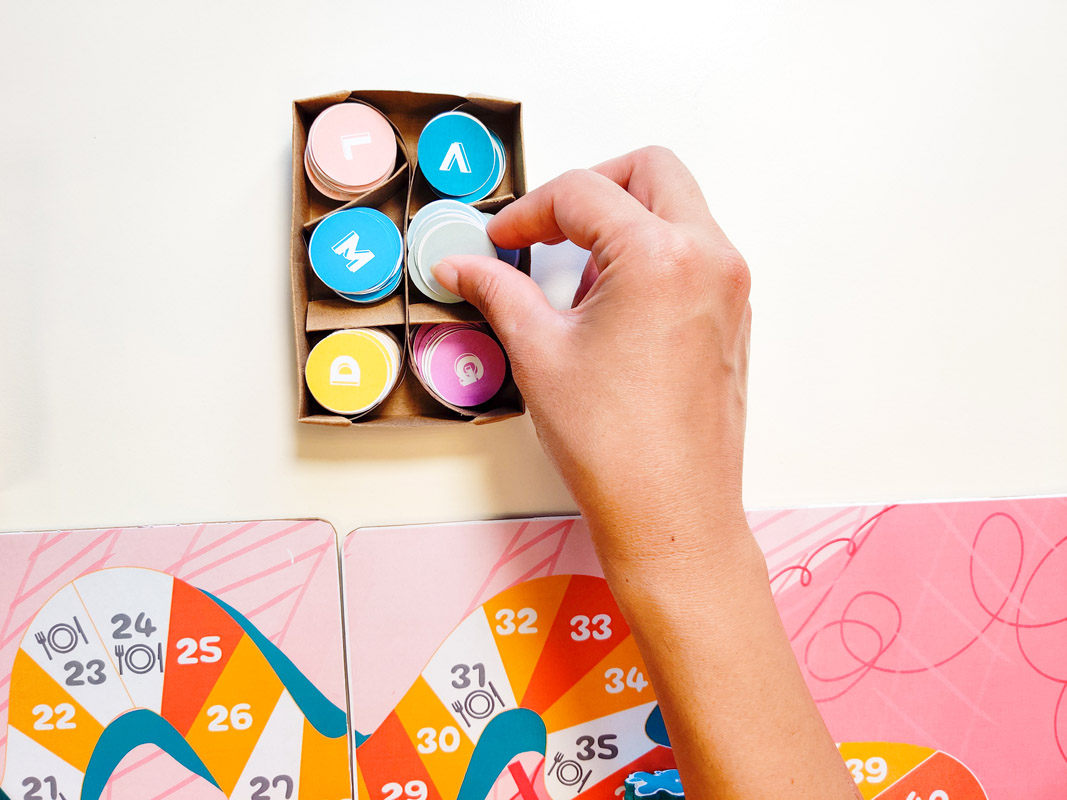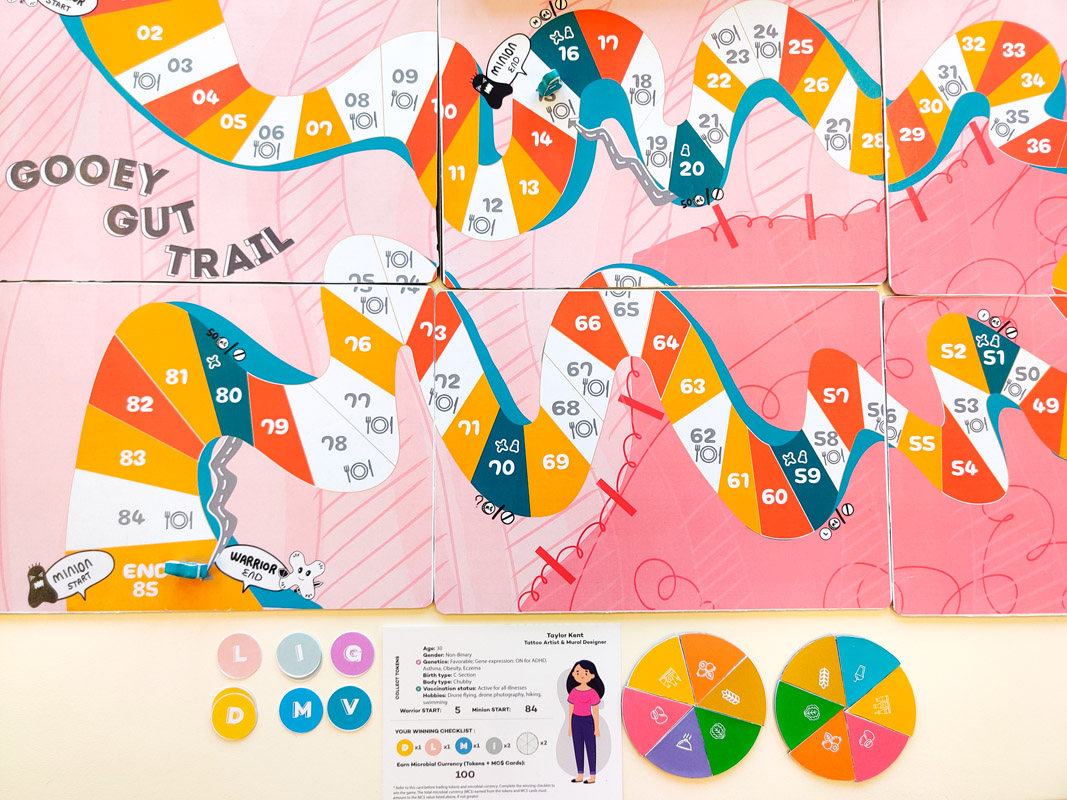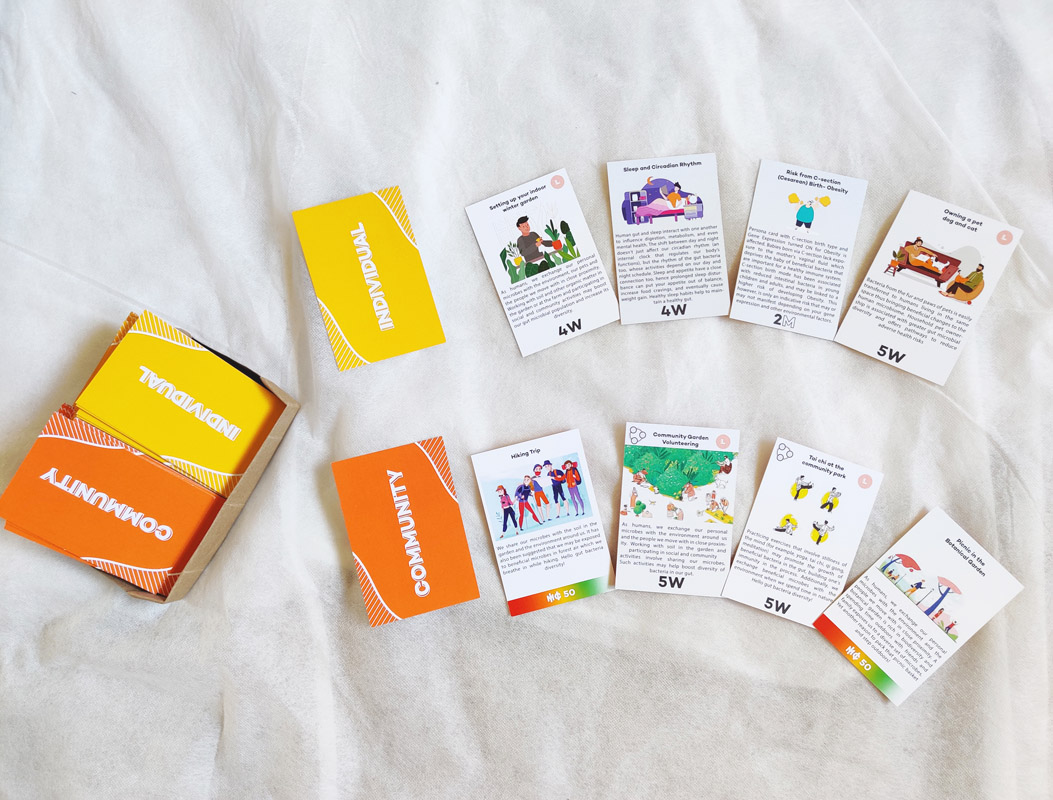The design of GGT is informed by scientific literature from the fields of gastrointestinal health, food science, game design, psychology, sociology, product & UX design.
The game was designed in the following process:
- Mapping of scientific literature on gut health,
- Identifying real-world contexts which influence gut health,
- Identifying key design elements and designing their features,
- Crafting game rules,
- Prototyping and testing conducted as a cyclical process.
The game was play-tested by the research team during the design phase using hybrid tools i.e., part-physical and part-digital. The components of the final research product were partly printed at home and partly through a commercial vendor. Other components like game meeples, food plate, wedges and component trays were handcrafted at home.
The game was designed using sustainable materials such as cardboard, air dry clay, MDF board, linen bag, brown craft paper, magnetic sheets and repurposed cardboard containers to hold game components. The design goals of GGT were in alignment with the design ideals of our team that is focused on reducing the impact of our design choices on the environment.
The final research product is fully-functional, aesthetically-appealing and reflective of the theme which resulted in a seamless user-experience and meaningful feedback from users.
Testing the final game through a field study revealed that users gained a new-found understanding of the intricacies involved in gut health. The user-experience of the game was positive and users reported having an enjoyable experience that conveyed scientific insights through game mechanics, interactions and aesthetics.
One participant said “The unboxing experience was good. The vibrant colors and the design aesthetics of the components really appealed to me. The card decks and other small elements looked really interesting and I was excited to go on the journey”

